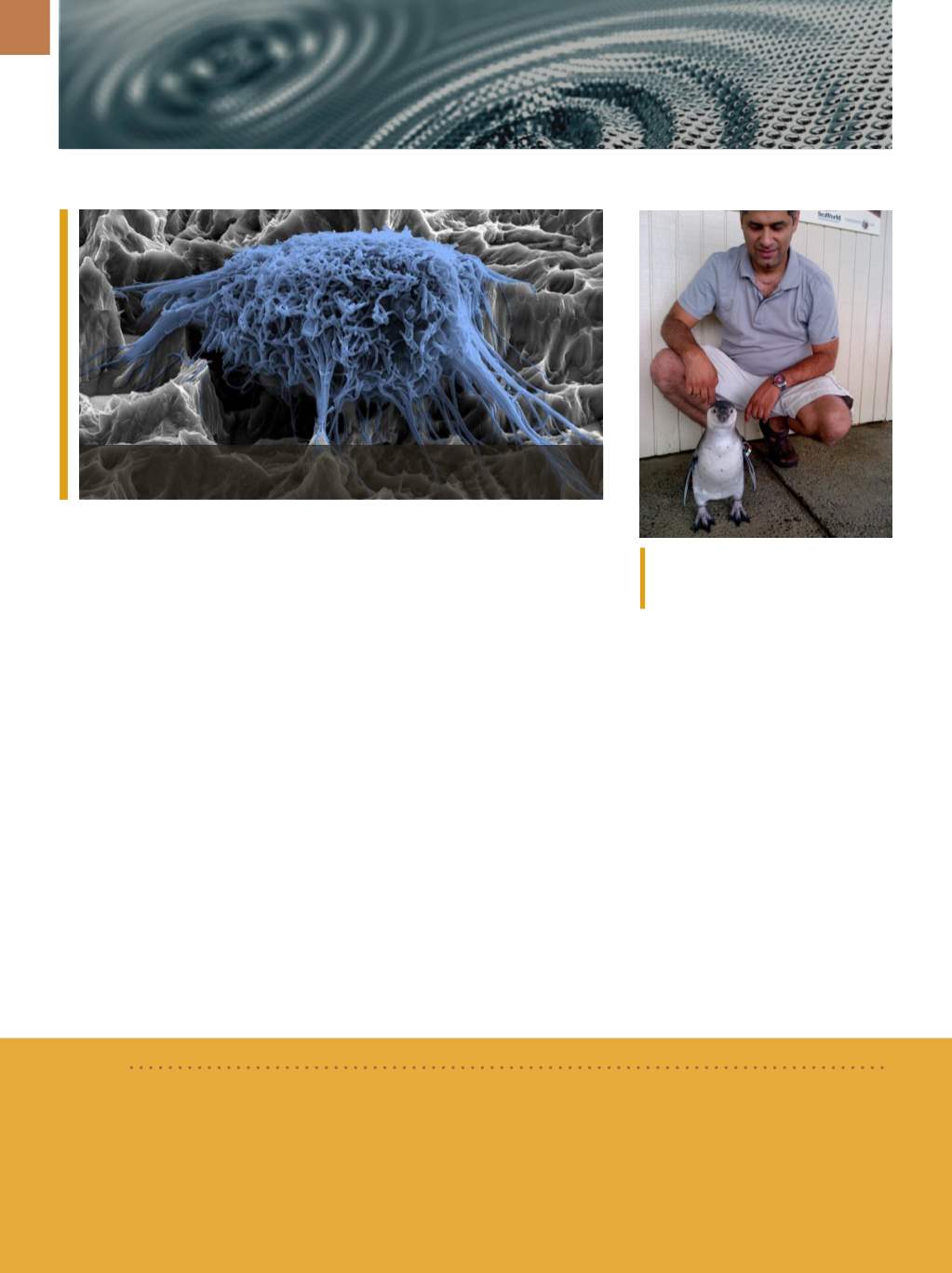

A D V A N C E D M A T E R I A L S & P R O C E S S E S | J A N U A R Y 2 0 1 6
1 6
SURFACE ENGINEERING
PLASMA IMPLANT COATING
PREVENTS INFECTIONS
To lower the risk of infection and
improve the long-term effectiveness
of dental implants, researchers at the
Fraunhofer Institute for Manufacturing
Technology and Advanced Materials
IFAM, Germany, developed a new type of
implant coating in cooperation with in-
dustry partners. The DentaPlas coating
helps prevent bacteria growth, allowing
the implant to takeholdand forma faster
andmore permanent bond with the jaw-
bone. The new approach combines sur-
face materials that feature both physical
and chemical properties. “We have given
the DentaPlas coating a rough texture,
which promotes cellular growth, in ad-
dition to combining it with a hydrophilic
plasma polymer coating, which attracts
moisture,” says Ingo Grunwald at IFAM.
Researchers integrated silver nanoparti-
cles into the thin plasma polymer coat-
ing, which is no more than 100 nm thick.
The silver nanoparticles dissolve over a
period of several weeks and during that
time they continuously release small
quantities of antimicrobial silver ions.
www.ifam.fraunhofer.de/en.html.PENGUIN FEATHERS INSPIRE
ANTI-ICING COATING
Antarctic penguins live in the bit-
ter cold, where air temperature can
drop to -40°C and winds reach speeds
of 40 m/s. Although these birds routine-
ly hop in and out of the water in sub-
freezing temperatures, they manage to
keep ice from coating their feathers.
To discover the penguins’ anti-
icing secret, researchers at University
of California, Los Angeles studied pen-
guin feathers, donated by SeaWorld
San Diego. Scanning electron microsco-
py shows that the feathers feature tiny
pores that trap air andmake the surface
hydrophobic. In addition, penguins ap-
ply an oil to their feathers, which is
Scanning electron microscope image of a properly grown cell on a dental implant.
Courtesy of Fraunhofer IFAM.
BRIEF
ASTM International,
West Conshohocken, Pa., released a new standard titled
Standard Specification for Electrolytic
Plasma Treatment Processing of Conductive Materials.
The specification covers the requirements for cleaning, coating,
or surface modification, or combinations thereof, of conductive materials, primarily metals. It covers any conductive
material treated or processed by the electrolytic plasma process including products designated as long products,
including wire and fine wire; flat-rolled materials; fasteners; connectors; bolts; assemblies; structural materials; hard-
ware items; and medical items.
astm.org.
Pirouz Kavehpour poses with a penguin
studied by his team to learn about anti-
icing tricks.
produced by a gland near the base
of their tails. The combination of the
nanosized pits and the preen oil makes
the feathers superhydrophobic.
This avian technique could help hu-
mans solve some problems with ice. For
example, iceonanairplane’swings, flaps,
and rudder can alter the aerodynamic
properties of the plane and even cause
accidents, leading to the need for chem-
ical de-icers. Superhydrophobic surfaces
inspired by penguins could be cheaper,
longer-lasting, and more environmen-
tally friendly. “It’s ironic that a bird that
doesn’t fly could one day help airplanes
flymore safely,” says Pirouz Kavehpour, a
professor at UCLA.
For more information:
Pirouz Kavehpour, 310.825.6494,
pirouz@ seas.ucla.edu,
mae.ucla.edu.


















